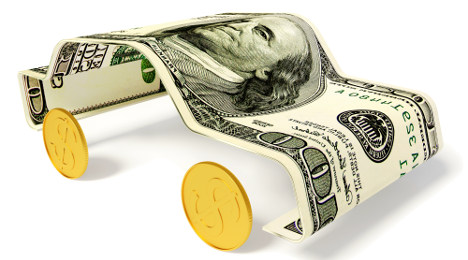Subprime Trouble? Moody’s and Consumer Advocates Differ

By subscribing, you agree to receive communications from Auto Remarketing and our partners in accordance with our Privacy Policy. We may share your information with select partners and sponsors who may contact you about their products and services. You may unsubscribe at any time.
NEW YORK and DURHAM, N.C. –
Despite consumer advocates insisting that rising auto financing default rates are mirroring the mortgage mess that triggered the most recent recession, Moody’s Investors Service explained that elevating delinquencies for loans originated by independent finance companies reflect a loosening of credit typical of the current expansionary consumer lending cycle.
Analysts determined the rise does not indicate that lending has reached a tipping point at which finance companies will not be able to manage losses. Moody’s arrived at that assertion according to the report titled, “Rising Subprime Auto Delinquencies Reflect Gradual Credit Expansion.”
Although 60-plus delinquencies rose 14 percent to 2.07 percent in third-quarter 2014 from 1.82 percent one year earlier, Moody’s data showed they are still below their highs following the financial crisis.
In addition, Moody’s vice president and senior analyst Peter McNally noted that loosening credit and increased competition among finance companies has caused delinquencies to rise across other segments.
“These factors have led to a 5-percent rise in delinquencies for banks and a 9-perccent rise for credit unions, which tend to focus on prime lenders,” McNally said.
McNally emphasized the current rise instead reflects the expansion of credit that typically occurs following a downturn.
Subscribe to Auto Remarketing to stay informed and stay ahead.
By subscribing, you agree to receive communications from Auto Remarketing and our partners in accordance with our Privacy Policy. We may share your information with select partners and sponsors who may contact you about their products and services. You may unsubscribe at any time.
“Lenders would have to dramatically expand lending to borrowers with the weakest credit to cause subprime auto performance to significantly deteriorate in 2015,” McNally said.
Moody’s also mentioned that performance is unlikely to deteriorate significantly, because finance companies are already showing some caution in underwriting in response to rising delinquencies. Analysts projected this tightening will limit the amount by which losses will rise.
The report pointed out the rate at which banks and captive finance companies have increased their lending to subprime borrowers slowed in the third quarter, and credit unions reduced their share of subprime loans by 4.2 percent year-over-year.
“However, subprime lenders continue to pursue some risky strategies, such as offering larger loan amounts and extended loan terms, which put the lenders at greater risk in the event of borrower default,” Moody’s said.
It’s the thought of those risky strategies that are giving fuel for arguments offered by the Center for Responsible Lending, which recently published a report titled, “Reckless Driving: Implications of Recent Subprime Auto Finance Growth.”
Center analysts acknowledged individuals who argue that the auto finance market is not facing similar issues that the mortgage market did before the housing meltdown usually start with a comparison of delinquency and default rates. They believe claims auto loan delinquencies and default rates look much lower in comparison to the mortgage market are misleading for several reasons.
“First, the delinquency and default rates used are a snapshot in time measurement,” the report said. “These rates are calculated by taking the total number of accounts outstanding and dividing that by the number of accounts in delinquency (meaning that the consumer is behind on their payments) or in default (the point at which the lender seeks to recover the collateral).
“Data on the cumulative number of delinquencies and defaults over a period of time is much more revealing because that data show the overall impact on the market, and is virtually never reported in the auto market,” center analysts continued.
“The second fault in the comparison is that auto lenders can repossess a car in about one-tenth the time it takes to foreclose on a house,” they added. “On average, a lender repossesses a car within 48 days, whereas the average foreclosure takes 577 days. A delinquent home loan stays on the delinquency and default report until the home is foreclosed, which means that those loans are included in the delinquency and default rates for a long time. Conversely, auto lenders are able to clear delinquent loans off the books relatively quickly.”
The Center for Responsible Lending cheered the regulatory moves made by agencies such as the Consumer Financial Protection Bureau. But the center closed its report by emphasizing that it is looking for federal officials to do more, especially when it comes to dealer participation.
“Dealers already receive compensation in forms other than interest rate markup, and those other forms have far less risk of discrimination and unfairness than interest rate markup,” the report said. “Regulators should also strongly consider applying a consistent ability-to-repay standard for auto lending, and ensure that lenders are exercising appropriate underwriting practices.”


